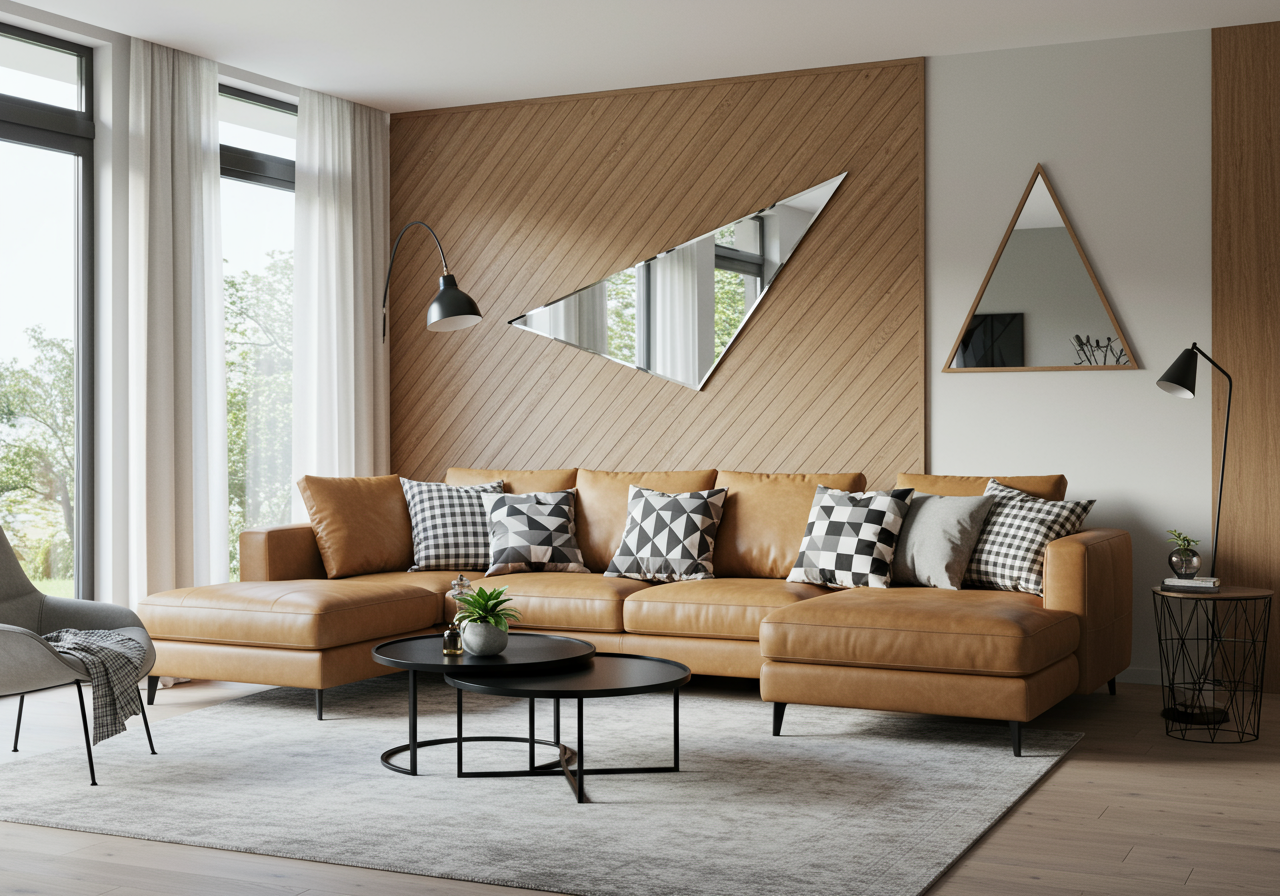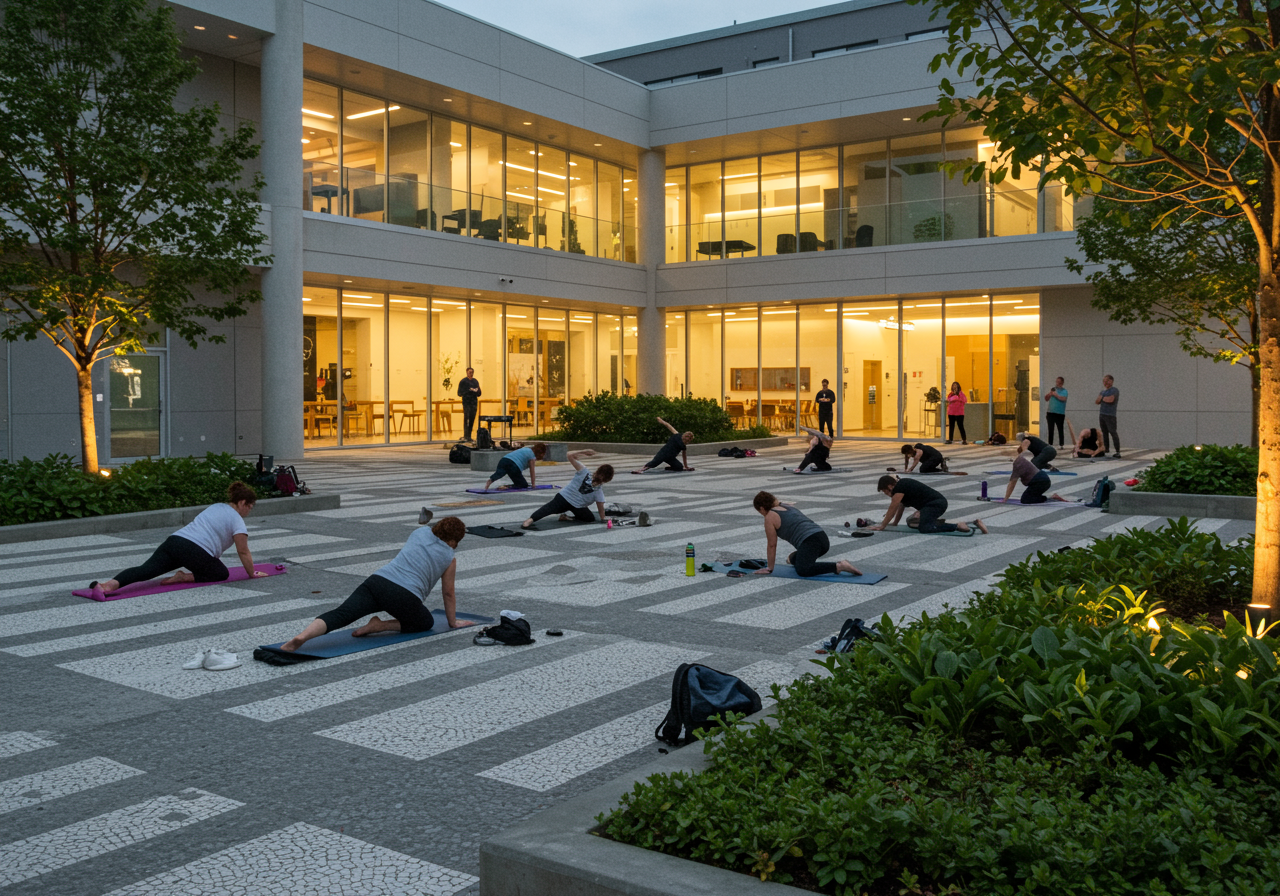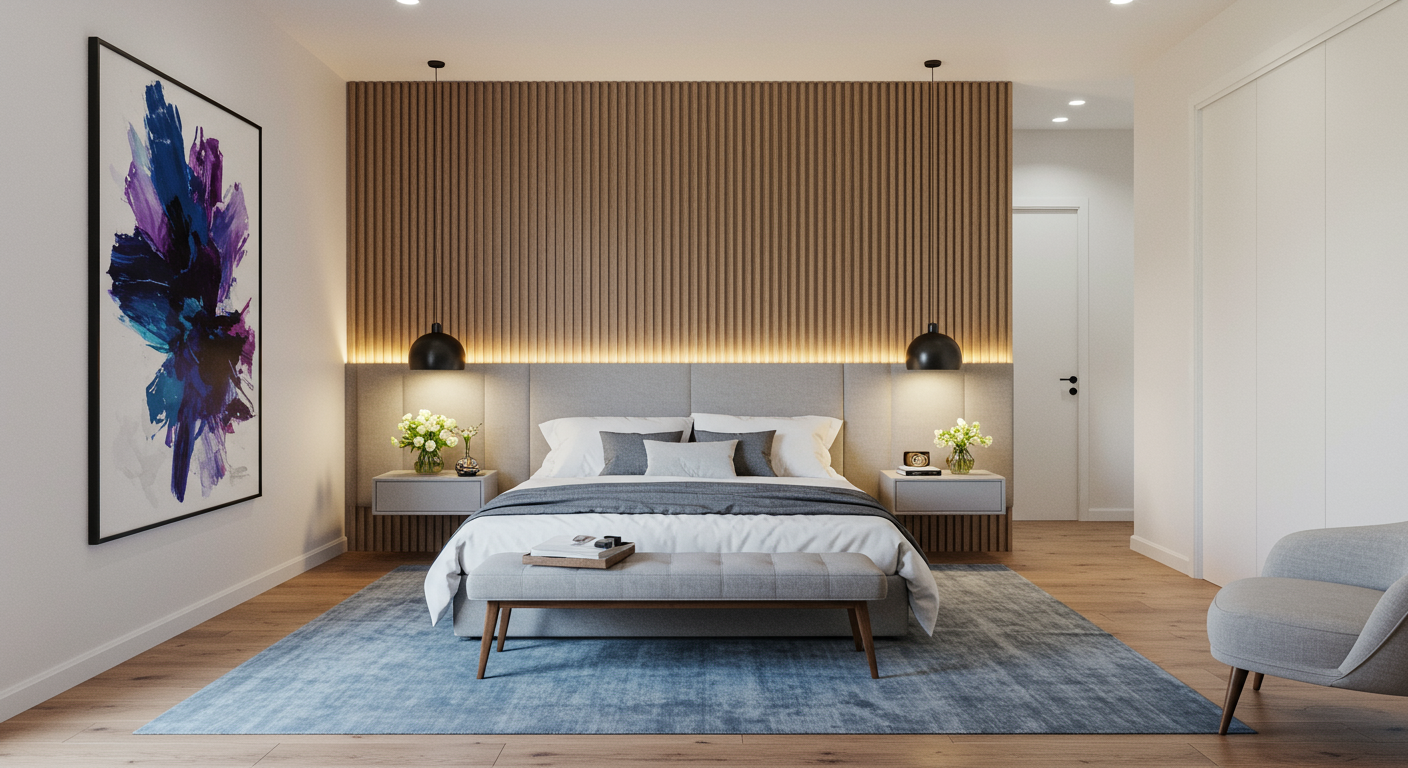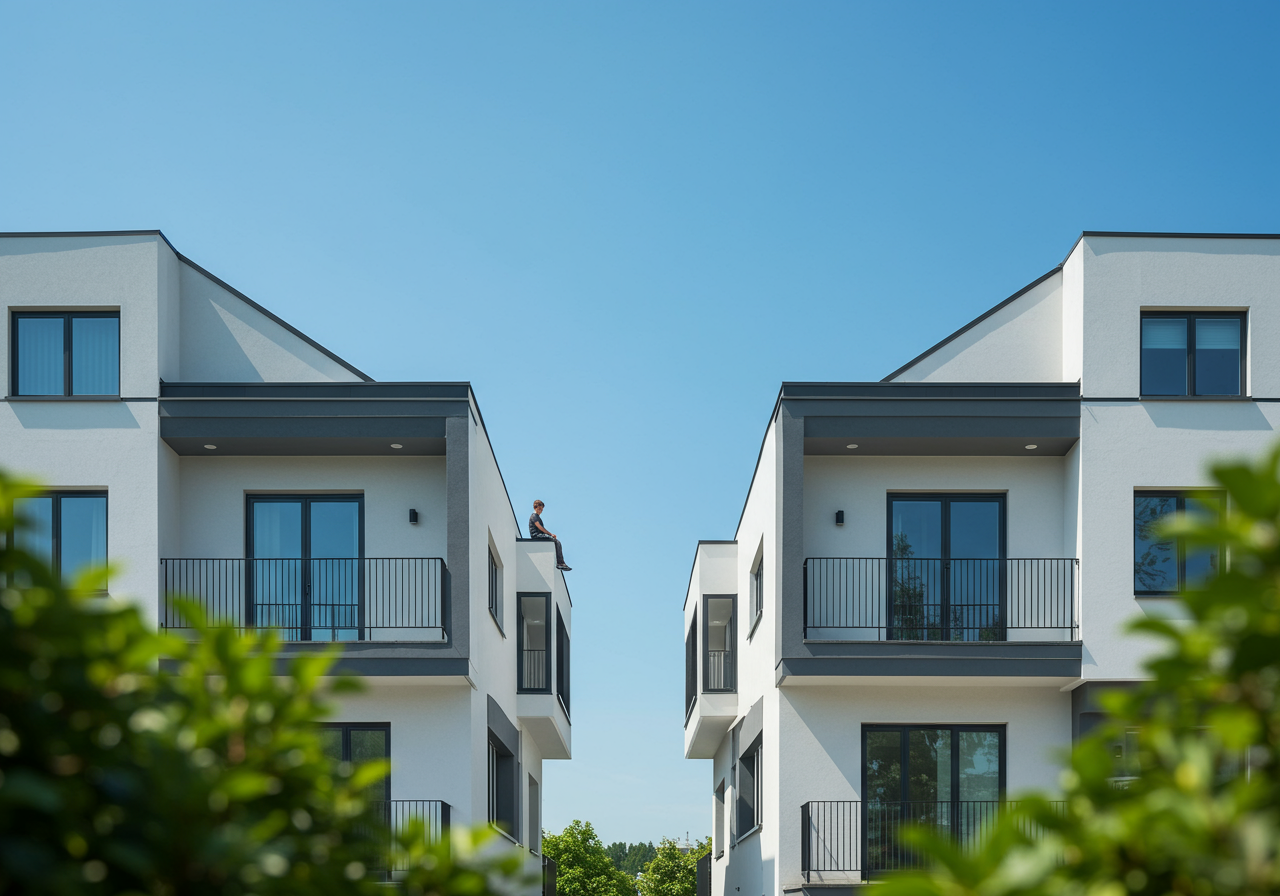Can the right home make you live longer?
The multibillion-dollar wellness real estate industry believes air purifiers, pollution sensors, and natural materials can breathe new life into high-end homes.
The latest high-end real estate amenity: living longer.
At least that’s the view of South Florida real estate developer Rishi Kapoor, whose Location Ventures has begun selling units in a forthcoming development in Coral Gables that Kapoor believes will deliver the promise of a healthier home, which he says is “not just science fiction, but fact.”
The forthcoming Villa Valencia development, set to open in mid-2021, features 39 units, all offering some of the latest features of the burgeoning wellness real estate trend. The sales pitch highlights “hospital-grade air, energizing light and pollutant-free water to protect from contaminants, free radicals and aging.” Kapoor says when all is said and done, the units, which start at $1.65 million, will benefit from a “five-figure investment” per unit in air purification systems, circadian living lighting, a Savant home audio system, and the Darwin system, a new smart-home solution that monitors environmental pollutants (Delos will have over 1,000 contracted projects by the end of 2019). Residents can set alerts for certain allergens and be notified when they reach a critical level indoors, which turns on the HVAC to remediate and circulate fresh air. Along with access to landscaped rooftops and a hammam spa, the features within each unit can, according to the sales material, create a home that “makes you live longer.”
“We’re catering for a clientele, an affluent clientele, and what we want to provide—and I’m careful to say this, it’s important—we want to create the healthiest home environment possible,” he says. “What is wealth without health?”
Many buyers agree; so far, seven of the units have been sold.
Can a building really extend your life?
Villa Valencia is just the latest example of the growing and somewhat nebulous wellness real estate industry. The Miami, Florida-based Global Wellness Institute, an industry trade group, claimed in a much-cited 2018 study that it’s a $134 billion industry, growing at a rate of 6.4 percent globally a year and expected to top $180 billion by 2022.
Rendering of a bedroom of a unit in Villa Valencia, which will be equipped with the Darwin system, a new smart home solution that monitors environmental pollutants. Residents can set alerts for certain allergens and be notified when they reach a critical level indoors.
While pitches promoting colored lighting and life extension may sound like GOOP for the Restoration Hardware set—there’s even a term, “well-washing,” for projects that dress up designs with bogus health claims—the idea of wellness as a new amenity or real estate category has gained credence due to emerging knowledge about health and air pollution, especially the indoor variety.
Studies by acclaimed researchers and stories in the New Yorker and elsewhere have highlighted the danger of living a life mostly indoors, surrounded by stale, unhealthy air and a cocktail of toxic chemicals. Additional research points to the importance of environment over genetics in determining health outcomes. A recent World Health Organization study that found that 80 to 90 percent of our health outcomes are intimately tied to where and how we live, and another analysis by the group found that preventable, non-genetic chronic diseases are expected to account for almost three-quarters of all deaths worldwide by 2020. A 2014 study by Texas A&M University researchers, looking at a wellness community called Mueller in Austin, concluded that the community’s design “led not only to more walking and biking by its residents, but also to greater social interaction and neighborhood cohesiveness [i.e., community feeling].” Combine those results with consumer shifts on diet, exercise, and general wellness, and it makes sense that our homes, often our biggest investments, would receive scrutiny over whether they’re as healthy as they could be.“People have recognized that in the last 50 years, our lifestyles have changed, and we’ve seen a rise in chronic disease and obesity, and people being less active. All of those issues relate back to our lifestyles, habits, and daily life, and where we live.”
“People have recognized that in the last 50 years, our lifestyles have changed, and we’ve seen a rise in chronic disease and obesity, and people being less active,” says Katharine Johnston, a researcher and co-author of the Global Wellness Institute report. “All of those issues relate back to our lifestyles, habits, and daily life, and where we live. With real estate in particular, younger generations don’t want to live in a suburban neighborhood with no sidewalks and drive everywhere.”
It also doesn’t hurt developers’ bottom lines to extoll the virtues of a healthier home. The Global Wellness Institute suggests homeowners are willing to pay an average of a 10 to 25 percent premium for houses within wellness communities. That may explain why, as of 2018, roughly 350 such projects were in the pipeline globally. Johnston says the trend is only in the early stages of mainstream development, and will continue to ramp up.
Or, as her colleague, senior research fellow Ophelia Yeung, believes, broad consumer awareness is “just being awakened” and in a few years, it’s “going to come like a tsunami.”
How wellness living is being defined today
Designing homes and communities for wellness isn’t new. For centuries, resorts and escapes have been created with health in mind, and even early examples of midcentury modern architecture evolved from the wellness trends of the early 20th century.https://www.youtube.com/embed/m75sTbARSGo?rel=0
Today’s nascent industry, though, inspired by new research and empowered by new and more affordable technology, is attempting to set standards. Just as in the green building movement, some organizations and builders have attempted to create checklists for certification. Two of the competing standards are the Delos Well Standard, introduced by the Delos development company, founded by former Goldman Sachs partner Paul Scialla (“If you believe in the wellness trend, why wouldn’t you apply it to the largest asset class there is?” he says) and the Fitwel standard. Johnston says both are based on quality research and take into account factors such as access to green space and natural lighting and the use of nontoxic building materials, but the Well standard is considered more high-end, while the Fitwel is “simpler and more cost-effective.” Johnston says that as standards and systems are evolving, many of the best projects she’s seen in terms of actual health outcomes aren’t certified (the 2018 report lists a number of studies of wellness communities undertaken by university medical centers).
“I wouldn’t be doing this if I didn’t think it was the future,” says Gregory Malin, CEO of Troon Pacific, a San Francisco-based builder of custom, wellness-optimized homes that’s been a leader in the field for years. “People are much more educated today about health and wellness. Think about it: How many meetings would you have started with meditation five years ago?”“If you believe in the wellness trend, why wouldn’t you apply it to the largest asset class there is?”
Malin says his firm, which now offers sleep-optimized luxury homes that shield residents from electric and magnetic fields and vent dangerous gases from chemicals under the sink, has been thinking about these trends for more than five years, after seeing major employers, such as Kaiser Permanente, offer wellness options to their employers. That led to Troon Pacific joining the US Green Building Council’s Building Healthy Initiative.
Being in the Bay Area, Malin says he’s accustomed to working for tech industry clients who dig into the mechanics of the technology and “go down the long tail” when it comes to health and wellness. Those who see health as a means to “open up a wealth of ‘super’ powers” that include “thinking ‘better, faster, and smarter’” are a key segment of the wellness market, according to Global Wellness Institute reports. Their interest has fueled a mini-boom in high-end wellness clubs, such as The Well, a “Soho House for wellness,” according to cofounder and chief creative officer Kane Sarhan, which opened late last month and features fitness and meditation space and a bar for biodynamic wine. Backed by Deepak Chopra and Keith Pyne, a sports medicine doctor whose clients include Kobe Bryant and Alex Rodriguez, the company is already scouting out additional locations in New York and Los Angeles.
Another aspect of the rise of wellness real estate is growing public awareness of climate change, and a deepening understanding of air pollution and its detrimental impact on our health. Malin says climate awareness is a growing factor in how his firm designs home; the record-breaking wildfires near San Francisco last summer inspired Troon to begin designing a new smoke sensor that shuts windows and recirculates filtered air inside homes.
Location Ventures’ Kapoor says climate change awareness and wellness real estate are linked.
“It’s such a common and present topic in our lives,” he says. “If I’m worried about my external environment, I’m worried about my internal environment.”

Wellness isn’t only for the rich
Talk of top-of-the-line air filtration systems and climate catastrophe suggest the specter of increased environmental inequity: the rich living in cocooned, climate-safe bubbles while the rest of us breathe a more polluted atmosphere.
But all the developers and experts interviewed for this story made a point to discuss how they see this technology and development approach trickling down, and all hope to develop more affordable and workforce-focused projects in the future. Kapoor says the tricked-out filters, sensors, and lighting he used for Villa Valencia would have been three times more expensive just five years ago. And Scialla is amazed at how fast the industry has grown.
“It’s amazing wellness real estate is a category of conversation today,” he says. “Wellness real estate was three words written on a napkin 10 years ago.”
And increasingly, planners and residential developers are making wellness a feature of affordable developments, says Johnston, encouraged by new partnerships with health care systems or policy changes that encourage healthier developments, such as new healthy housing incentives by Fannie Mae. Johnston points to Seattle’s Breathe Easy Homes, a public housing development oriented toward making life easier for those with asthma and respiratory health issues that has shown real promise and results: Asthmatic children living there had 63 percent more symptom-free days than in their previous homes, and showed a 66 percent drop in the need for urgent medical care.
“We have so many issues with our health care system and prevention,” she says. “As more people wake up to these issues, it can have downstream impact on health and disease. As people think about this holistic picture, it can have so much impact.”“Isolation and depression are synonymous. We’re trying to build community connection.”
That includes community connections and mental health. In Venice, California, the new Haven coliving development, a wellness-focused housing option featuring organic group meals as well as yoga and meditation, offers room for 96 members spread across four converted homes (each room houses four people in Japanese-style sleeping pods). Developer Ben Katz, inspired by coliving companies, such as Starcity, Common, and WeLive, felt he could take the idea in a direction that would be especially meaningful and impactful to the lives of members.
“Community is one of the main determinants of healthy living,” he says. “Living densely means sharing nicer things, and having people around you that care about you predicts your wellness and health. Isolation and depression are synonymous. We’re trying to build community connection.”
Haven, which costs $995 monthly—a deal in a neighborhood where a one-bedroom can be north of $3,000—attracts many in the fitness and startup communities, Katz says. The cost is another aspect of mental health, he says. The freedom to “cross-pollinate ideas” with other members, and to explore passions and projects without the weight of a high rent payment, can be freeing.

Haven offers room for 96 members spread across 4 converted homes (each room houses four people in Japanese-style sleeping pods).
Katz already says the company has plans to open three more locations in LA, as well as to expand to New York, Seattle, and Washington, D.C.
Johnston says one of the more intriguing aspects of wellness communities are developments like Haven that combine the cliched “life, work, and play” concepts into something that’s more urban, dense, walkable, and ostensibly car-free. Many wellness residential projects are looking to offer coworking for freelancers and entrepreneurs and expanded fitness amenities.
In fact, perhaps the most heartening aspect of a turn toward health and wellness in real estate development is how these concepts underscore the wisdom of traditional urban planning principles. Much of the change that this trend promises is, in many ways, a rewriting of the car-centric compact embedded in sprawl and most suburban development.
“Car-centered development is a huge barrier here, and it’s embedded in our zoning laws and building codes,” Johnston says. “If you want to do a green, healthy residential development far from the city, how do you get people to jobs with our existing transportation system? It’s going to be a long time, and take a lot of work, to make the kind of changes necessary to make many of these suburbs healthier.”



